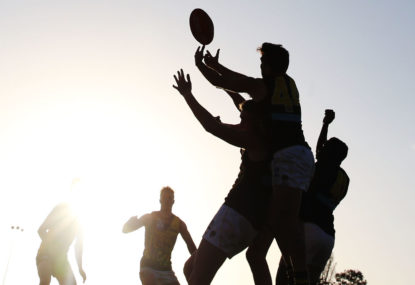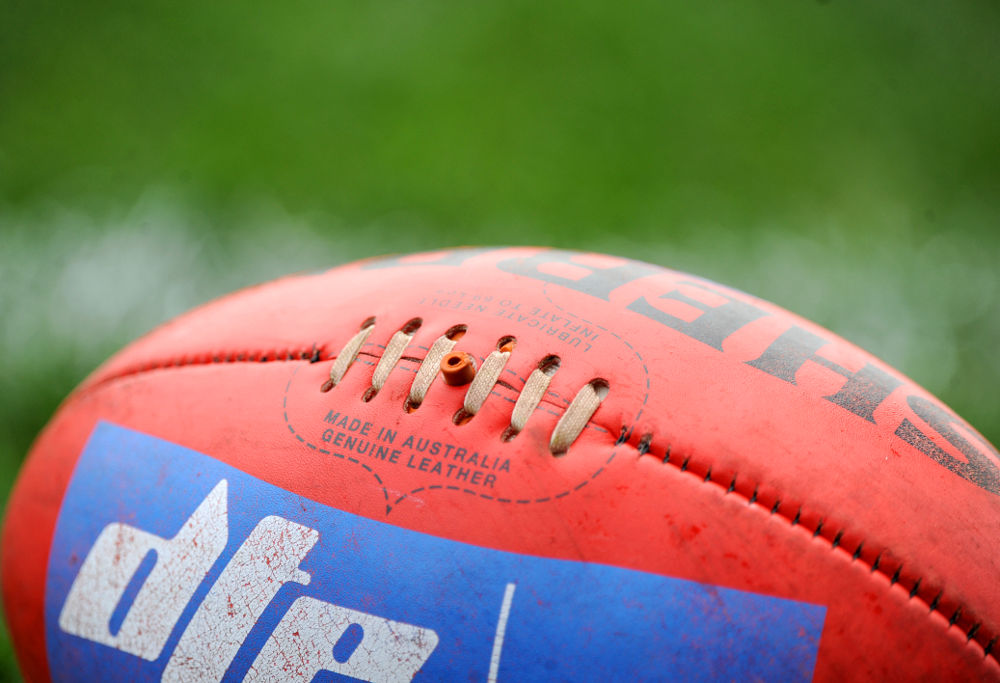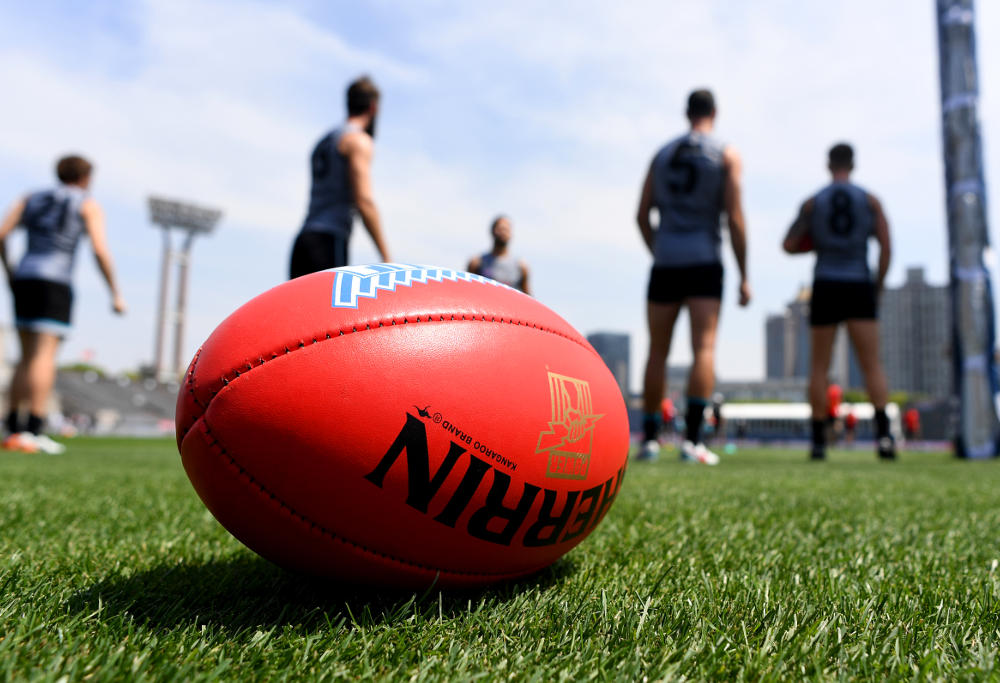JackJumpers' NBL title was special - but where does it sit among Tasmania’s top ten sporting moments?
It’s a pretty good time to be a Tasmanian sports fan right now. After years in the sporting wilderness with not much to celebrate,…

We all know that sport is ‘good’ for you.
Actually, I add a caveat here stating that my 40 year old back with its bulging discs and subsequent sciatica caused by a youth and early adulthood playing high-level sport strongly disagrees!
My ageing body issues aside, we all acknowledge that it’s generally a good thing to be active. Conversely though, childhood obesity is on the increase. Not only does this cause physical health problems, including diabetes, but also mental issues, such as low self-esteem.
Together, these outcomes can also have an incredibly negative impact on children and young people’s academic achievement, and social and life skills.
So, what can we do to improve the situation?
From the outset, it is important to acknowledge two things:
1. The issue is global, and effects society in much deeper ways than just sport streams, such as the drain on the taxpayer represented by poor health outcomes, and;
2. No single activity or sports organisation in itself has the answer. There is no silver bullet (though read on for an innovative approach from Sport England which may yield the best results to date).
To begin to address the issue, we first need to consider the obstacles and social trends that are potentially hindering people’s exercise levels.
A non-exhaustive list of these includes: time constraints; competing activities for leisure time (e.g. eating out, cinema); body image issues; injury; inadequate facilities; geography; cost; and social media/screen time.
Clearly, the issues are multi-faceted and complex. But does that mean we ignore them, and put them in the ‘too hard’ basket? Of course not.
But perhaps we do need to change our approach.
Traditionally, national and state sports organisations (referred to from here on collectively as ‘NSO’s’ for brevity) have had a heavy focus on the elite end of their talent pool.
To use cricket as an example, a passage in Gideon Haigh’s recent book ‘Crossing the Line’ refers to Pat Howard’s acknowledgement (in his role as Head of Team Performance at Cricket Australia), in light of the poor performance of the Men’s national team in Bangladesh, that the results did not represent a good return on the $100m annual investment in elite teams. This figure represents approximately a quarter of CA’s annual income of approximately $400m.

Cricket Australia team performance general manager Pat Howard (AAP Image/Nikki Short)
There is logic as to why spending has been focused so heavily in these areas. Without an elite team or pathway to aspire to, there is a strong argument to suggest that junior participation levels will suffer if the national team is either performing poorly, or not visible enough. This is the theory of ‘if you can’t see it, you can’t be it’.
The elite teams often also represent cash cows to an NSO in terms of generating commercial income, as brands seek to attach themselves to successful national sporting brands.
However, if we use the other sport I have been heavily involved in during my professional career over 12 years in the industry, we find a counter example which may point to the idea of national team and elite success being fundamental to participation levels, as flawed.
Statistics from the Australian Bureau of Statistics have shown for decades that soccer (I use this term to distinguish the sport from AFL or the rugby codes for the purpose of this article) has enjoyed very high participation rates at junior level. Higher in fact than more traditional ‘Australian ‘ sports, such as AFL, league, union, and cricket.
All this however, despite the relevantly low success rates enjoyed by the Australian men’s soccer team, the ’Socceroos’, who have traditionally been Football Federation Australia’s flagship team. Between 1974 and 2006, Australia did not even qualify for a FIFA World.
The team has only progressed beyond the group stages of the competition once, and their one and only Asian Cup success was not enjoyed until 2015 (though in their defence, they only became part of Asian Football Confederation in 2006, before which they commonly plied their trade against the might of American Samoa, Fiji and Tahiti, which in itself is hardly inspiring).
So if not elite teams then, where should funds be directed if the key outcome sought by NSO’s for the purpose of this article is greater participation, and perhaps more fundamentally, why should NSO’s care?
At the risk of stating the obvious, it is incumbent upon NSO’s to strive for higher participation rates for several reasons, not least of which is their continued financial viability and ongoing relevance.
The AFL have long understood the pivotal role played by their entry level program (Auskick, sponsored by NAB) in indoctrinating young children the ways of their code.
Similarly, generations of young Australians have experienced cricket for the first time through the Milo-sponsored in2CRICKET program (recently rebranded as ‘Cricket Blast’, and now supported by Woolworths).
There are obvious benefits to the national team of any sport if the funnel at the bottom end is wider, sucking more players in – the more people who play, the more people you have to choose from, and therefore the higher quality of the elite team should ultimately be.
How then should they approach this? I have touched on the importance of NSO’s having effective entry-level programs, and these are indeed key to ensure that children have an easy and obvious access point to their particular sport.

(AAP Image/Joe Castro)
There is more to it than just these programs though. It is not just children who are increasingly inactive, but their parents too. In the list of ‘blockers’ I referred to earlier in bullet-point form, I mentioned ‘cost as’ another potential factor.
If we imagine the population of the country as a pyramid, with elite sports people representing the pinnacle of the triangle, and enthusiastic amateurs as the middle band, we are left with a large band across the bottom of the pyramid.
This wide band represent at least a 1/3rd of the country in number, but contains a disproportionately high level of people in low-socio economic groups. These often include recent migrants, people with English as a second language, ethnic minorities, and those with a disability.
This suggests that it is these people that NSO’s should be targeting if serious in-roads are to be made in tackling inactivity, as they represent a very high percentage of those who are considered as physically inactive to a dangerous level.
Historically, however, NSO’s have spent too much time speaking to their databases of existing players, fans and parents to get people already interested in their sport to play more, buy more tickets, and upgrade their merchandise, rather than trying to crack new markets.
In 2017, I heard Jenny Price, recently departed CEO of Sport England, speak at the National Sports Conference in Melbourne. She explained the novel approach that her organisation had taken to tackling inactivity in that country.
Tired of banging their head against a brick wall with limited success in bucking the trend, they tried something different. Instead of drip-feeding relatively small amounts of money to a myriad of projects, and hoping that collectively they added up to decent outcome, they targeted the most economically deprived areas and spent big in each area.

How big of a problem is concussion in the AFL? (AAP Image/Tracey Nearmy)
The theory behind this new approach was that leafy affluent suburbs already had plenty of participation options, and the cash to access them.
The return on investment on offering them more would’ve been low, whereas in relatively deprived areas the greater concentration of people with less ability to access helpful initiatives and programs would represent a better opportunity to make significant inroads.
One such example can be found here. Only time will tell if this new approach will reap rewards, but personally I was impressed by their willingness to at least try a different approach to the problem.
It can be argued that Sport England and NSO’s have very different objectives. NSO’s are tasked as being the custodians of their particular sport, and may baulk at being held to account for rising childhood obesity and the pressure that inactivity puts on the health system.
NSO’s may also instinctively argue that they cannot afford to adopt such a narrow view to funding out of fear of upsetting voting member associations who may feel hard done by, as funding they have grown fat on (often without being to display tangible outcomes) is reduced or removed.
While these arguments certainly hold some weight, Sport England no doubt encountered similar protests yet had the courage of their convictions and strong leaders who dared to be different. They acknowledged the popular definition of insanity (Einstein?) as repeating the same process over and over, yet expecting different results – and so they sought not to appear insane!
In summary, I would suggest that the two concepts of maximising revenue and growing participation are not mutually exclusive. NSO’s can have their cake and eat it!
Higher participation numbers enables the NSO’s commercial department to demand higher prices of their media rights, and for the associated sponsorship packages they are touting.
If we distill the discussion right down, I think we can reduce the focus to two major challenges to address as priorities for any NSO that is seeking to play its part in tackling inactivity in society, while simultaneously driving its own participation numbers.
The first is to get the funding balance right between supporting national teams, marketing and selling tickets and driving participation.
The second is to try to think bigger than they have traditionally, beyond the boundaries of their own sport, to work with cross functional organisations they have not partnered with before. These include local government, the health care sector, the police, volunteer groups, community leaders, school representative bodies and faith groups.
None of this is easy, but I would suggest that meaningful change rarely is.
Strong leadership, such as that displayed by Jenny Price, is essential if significant change is to be achieved.